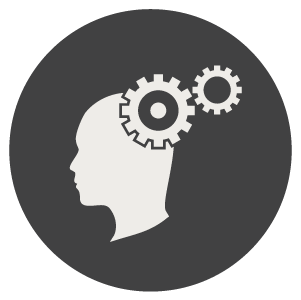Optimize Your Home Office
After a couple years of changes to our work environments, many of us still struggle to function at our best in a work-from-home environment (I know I am). Maybe you’ve had to get really creative converting a space in your house into a functional multi-purpose office. Perhaps you have kids pulling at your attention all throughout the day. Conceivably your laundry, dishes, and other household tasks are no longer out of sight, out of mind.
You may have heard the word ergonomics, but what does it mean for your work-from-home environment?
Is it really possible that every component of your office set-up affects the way you work?
If you had unlimited space and resources to work with, what would your ideal workspace look like?
How would this improve your focus, and increase your productivity?
The Importance of Home Office Ergonomics
The way you furnish your workspace has a huge impact, especially for knowledge workers who spend hours and hours at the computer. Those with access to the right furniture and work tools are significantly more engaged, have increased productivity and feel equipped to do their job.
Ergonomic concerns are typically related to laptop usage. If we’re working on a hard surface, in a non-adjustable chair, with no armrests, and with a low monitor height, we’re bound to increase our neck and back pain, as well as eye strain.
Unfortunately, this is precisely what the set-up of most people resembles while working from home.
After being forced out of the workplace by the restrictions of the pandemic, the concept of ergonomics fell into the hands of the employee, with a lack of knowledge or financial resources to set themselves up for success. If you can’t pour money into a swanky new home office, what can you do?
Easy-to-Implement Home Office Changes
Temperature Control
Hopefully you're not in a war with your family or housemates over who controls the thermostat, and at what temperature it should sit at. If this is the case, let them know that the temperature of your work environment heavily influences your ability to effectively do your job. In fact, research has shown that when temperatures start to climb over 25 degrees Celsius, productivity decreases by 2% per degree. Additionally, it was found that temperatures below 22 degrees predict subpar focus, so ideally you’re aiming for somewhere in between.
Noise Levels
We are hard-wired to pay attention to the human voice and naturally find it quite distracting. If your home environment is shared with others, seek out a space with a closed door to help you muffle this direct distraction. If pre-COVID you enjoyed working from coffee shops and shared office spaces, it’s likely that you focus best with some subtle background noise or light instrumental music. With some noise-canceling headphones, you can experiment with different apps and playlists to see what kind of ambient noise or music best sets you up for focus.
Lighting
Take a moment to imagine the gentle warm yellow light of the morning sun and its calming effects on our mood. When it’s time for deep concentration, white and blue lights tend to assist our work better. This can be as easy as the switch of a lightbulb, or using different light sources during different times of the day. Turning on a white light when you start work to stimulate focus and creativity, and swapping it for an orange light as you wind down for the day. This mimics the natural patterns of sunlight our brain expects and could help improve your sleep as well!
Office Layout
Work with what you have, and make small adjustments until it serves you best. Do you have a window in your workspace? Turn to face it, especially if your view contains trees or greenspace. The more connected we are with nature throughout the day, the better our brain will function. Sitting for long periods of time can be surprisingly hard on the body. Thankfully with a stack of books and a little improvisation, we can all have a standing desk to raise our computer and give our backs a break.
There is plenty to think through when it comes to ergonomics and office design.
Adding in the work from home factor has sent us right back to the drawing board. It’s important to keep an open mind, and think of the changes you have the ability to make in your workspace. Add a plant. Bring in a pet for company, and connection to nature. Move things around. Turn some music on, and turn it right back off if it distracts you.
For more answers to your questions on office set-up and working from home, take a listen to our Podcast, The Science of Work. In Episode 4, we further explore the optimal office set up. We ask questions like, “Does the optimal office set-up change for different genders and ages?”, “Are silent work spaces better than collaborative ones?”, and “What is the correlation between people’s comfort while working, and business results?”
Listen today!
Consciously design your day, or someone else will.
Dr Lisa Belanger
Lisa has a Ph.D. in Behavioural Medicine, an Executive MBA, and is a Certified Exercise Physiologist and High Performance Specialist.
















